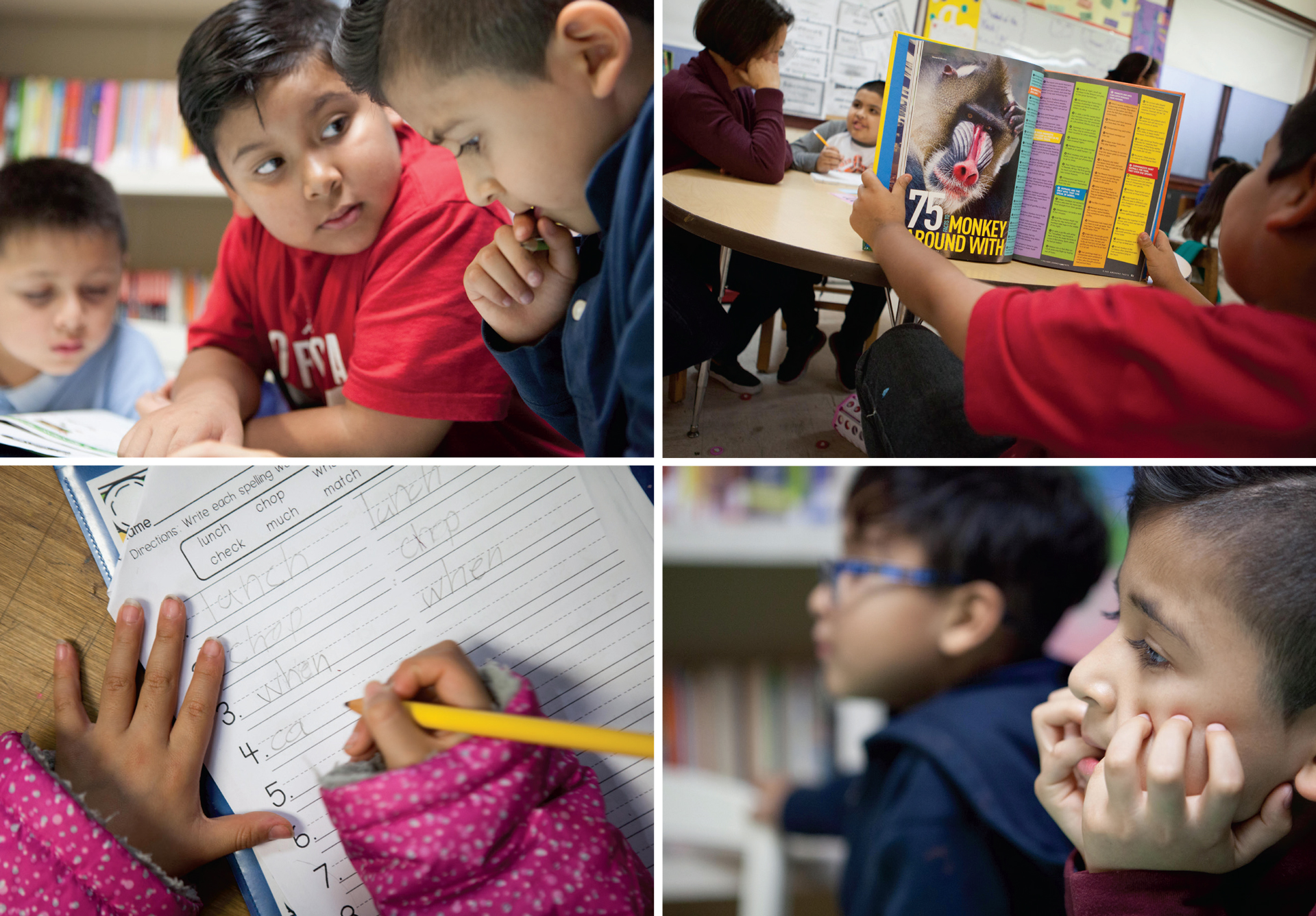
Breaking the Cycle
At Richstone Family Center, creative thinking is changing child abuse—and strengthening families from within.
- CategoryPeople
- Written byKate Gammon
- Photographed byJack Zellweger
A new playground gleams next to a tidy green garden and a painted shape of the United States on the pavement. Between large apartment buildings, the Richstone Family Center feels like an oasis of calm and peace in a busy, tough Hawthorne neighborhood.
“We used to call it kind of like a Band-Aid to heal them immediately. Now we’re giving them programs that will help them down a path of success over the longer term.”
And that’s just what Richstone is intended to be. Forty-five years ago the center opened its doors with the goal to treat and prevent child abuse. Since that time it has grown from a staff of six to 135 and now serves more than 3,500 families. The mission, too, has grown: It now includes early education programs, parenting classes, fatherhood training, after-school programs, and health and wellness.
“Right now we’re primarily focused on dealing with healing of immediate trauma, so we can provide counseling and therapy to help families get through any urgent crisis,” says Allison Tanaka, Richstone’s director of development. The center is working on ways to also provide longer-term programs like health, wellness and financial literacy programs—skills that help families build resilience.
“We used to call it kind of like a Band-Aid to heal them immediately. Now we’re giving them programs that will help them down a path of success over the longer term.”

One of those efforts is in nutrition. The small but hardy garden outside near the playground serves as an entry point to the basic points of cooking. Local chefs often come to teach the children how to cook, including Chef Michael Fiorelli from Love & Salt in Manhattan Beach.
Another new program combines a food donation with nutrition education. As Richstone’s CEO and president Roger Van Remmen explains, parents would line up hours early to receive donated grocery store goods. “Since we’ve got this captive audience, why not take them and put them in a class to teach nutrition?” That effort has become a popular class, and the participants are taking the knowledge home to their families.
Roger points out the shiny new playground. It was another community effort, in collaboration with JetBlue and playground nonprofit KaBOOM! In just one day last November, 200 volunteers worked for 6.5 hours to construct play structures based on drawings done by kids at Richstone. “It’s been crawling with kids ever since,” Roger laughs.
Inside at the after-school Richstone Kids Club, volunteers of all ages and backgrounds read to school-age kids. They also work on homework. Richstone enjoys the support of hundreds of volunteers who bring a perspective and a life experience these kids wouldn’t otherwise see, says Roger.
More people are willing to open up and talk about issues in parenting and challenges in their lives, which is a remarkable improvement, Roger and Allison say. One example is the popularity of a domestic violence prevention program launched last June. The program helps fathers learn coping skills, conflict resolution and make connections with other men—through classes and mentorship.
The Richstone Family Center plans to extend their mission with a new healing center they hope to open next year. The organization received a $1 million grant to serve 500 additional at-risk and abused children and their families. The center will provide increased access and availability to programs including play therapy, art therapy, pet therapy, yoga, self-defense, nutrition, a young men’s group, middle school teen dating workshops, a fatherhood program, support groups for teens and young moms, substance abuse prevention, a targeted rehabilitation referral program and a vocational services assistance program.
In much of the South Bay, residents take things like parks and gyms and services for granted, says Roger. Richstone is providing the same feeling: an oasis for the community in Hawthorne.


























